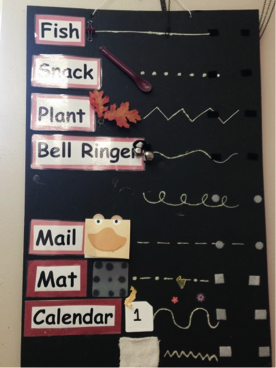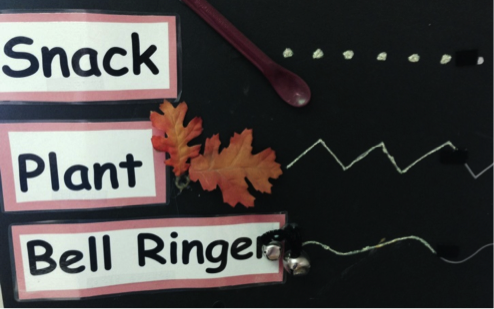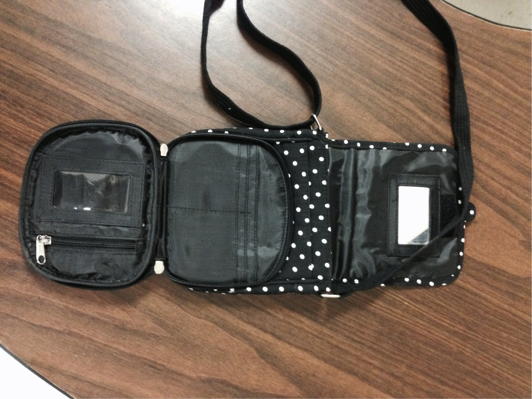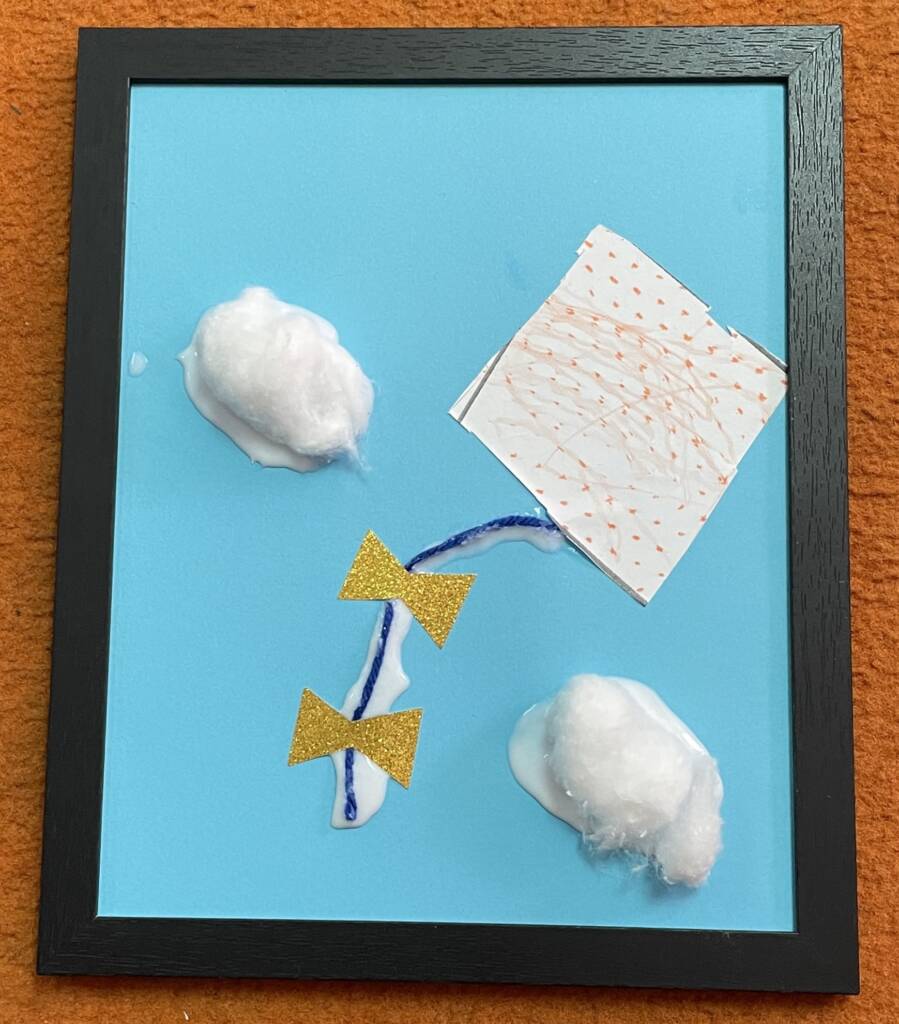 Recently a friend from college, Kitty Greeley, was observing in my classroom for research she is doing as part of her doctoral degree at Florida State University. After her observations were complete, we spent some time chatting about what she observed and early childhood for visually impaired learners in general. During this conversation, she brought up my beautiful classroom job chart that she didn’t see me using. I had to hang my head and admit that although I know that the classroom jobs are important, they sometimes slip to the sidelines as other parts of the daily routine take priority. Our conversation continued, and she reminded me of all the AMAZING learning experiences that take place when students participate in classroom jobs, and the areas of the Expanded Core Curriculum (ECC) that are taught through these daily jobs.
Recently a friend from college, Kitty Greeley, was observing in my classroom for research she is doing as part of her doctoral degree at Florida State University. After her observations were complete, we spent some time chatting about what she observed and early childhood for visually impaired learners in general. During this conversation, she brought up my beautiful classroom job chart that she didn’t see me using. I had to hang my head and admit that although I know that the classroom jobs are important, they sometimes slip to the sidelines as other parts of the daily routine take priority. Our conversation continued, and she reminded me of all the AMAZING learning experiences that take place when students participate in classroom jobs, and the areas of the Expanded Core Curriculum (ECC) that are taught through these daily jobs.
Children with visual impairments, all levels of vision loss, are at a huge disadvantage when learning about the world and how things happen. Same age sighted children learn incidentally about how things work and all the things that happen throughout the day. They learn simply by watching activities happen, but our kids don’t have that opportunity. They REQUIRE active participation, which is one of the huge benefits of classroom jobs.
Parents: this post talks about classroom jobs, however, you can use some of the same ideas and concepts for jobs at home. Read to the end and I have a few ideas that are specific for home.
Why are classroom jobs important for a child with a visual impairment?
- Classroom jobs teach important life skills
-
Involve the child in natural routines of the day that they can only learn by ACTIVELY participating in the activity
-
Same age sighted peers are participating in these same types of jobs, or activities at home and at school (social skills)
-
Classroom jobs are an opportunity to start learning about “work” and career education, another part of the ECC!
-
Classroom jobs provides a sense of pride (self-determination on the ECC), a child learns that his friends or peers are relying on him to do his job whether it is watering the plant to keep the plant alive, passing out cups so everyone can have water, or ringing the bell to indicate the end of playground time…. Their job is important to the entire class, this job matters!
-
Teaches beginning literacy skills as the kids learn to “read” the chart each week to see what their job is
-
Social skills… the kids are responsible for helping the entire class, they start to hold each other accountable for their jobs and helping each other if needed
-
Classroom jobs also work on MANY compensatory skills, another important part of the ECC
How to Set Up?
- Choose jobs that are manageable, realistic and important to the classroom. These jobs really can be anything. The classroom teacher and staff can build excitement about the job and talk up the importance of any job created.
-
Be sure that there are enough jobs for everyone in the class.
-
 Create a chart that is accessible to all the students, posted or located in a place that is accessible to all if possible.
Create a chart that is accessible to all the students, posted or located in a place that is accessible to all if possible.-
The chart needs to cover all literacy mediums in the classroom — large print, braille, texture symbols, and real objects — whatever is appropriate for the group.
-
The chart should be posted low enough that all children can reach.
-
-
Introduce all jobs to every child. Possibly try one job per week or per day depending on your group if just starting out. Taking your time to start the jobs and teaching each student each job should help with building the job chart into the classroom routine (adding something new to a classroom can be challenging), and taking the time to teach each child the jobs should help them be more successful when it is their turn to do that job.
-
Decide how jobs are going to be chosen and how often: will they change daily or weekly? Will the children be able to choose, or will they simply rotate each week to make sure everyone gets to do and try all the jobs?
-
I was in a classroom recently for kindergarten-4th grade students and they labeled their jobs with real career names. For example, the lunch helper who helped prepare the meals was the sous chef. This I felt made the jobs more grown up and introduced the students to real jobs that people do! Very fun!
Every classroom will implement classroom jobs differently. Some will change jobs daily, and some will change weekly. I have found that changing weekly gives the kids more opportunities to practice each job and build confidence in that job and takes stress off of the teacher to change/update the chart each day and remember everyone’s jobs. However, others have had success changing the jobs each day and this is the model you will see in many typical educational settings. In my opinion our visually impaired kids benefit from the repetition that the weekly job provides.
A big question is always whether or not to compensate for the work being done. Again this is a personal preference and depends on the group of children. For young children just learning the job and having the responsibility to complete the job is enough, and if the children have additional disabilities just completing the job is a big enough chore! For older children or children who don’t have additional disabilities receiving compensation for their work is another great learning opportunity.
How to Compensate?
- I prefer to compensate with real money… great for money handling and learning the coins. And our kids need and require REAL materials.
- Choose a system that will work for the entire class — maybe the end of the week is payday, maybe the students keep track somehow throughout the week on a chart of some sort each time they completed their job — and then at the end of the week everyone receives compensation for each time their job was completed.
- Choose a method to collect their money, especially if they are getting paid daily, or are saving money up over time for a bigger purchase. Piggy banks and wallets work well. Remember REAL objects and materials are key!!
-
At the end of a pre-determined amount of time the students add up their money and are able to spend it on something, this might be in the form of:
- Goodie box
- Saving to “buy” ice cream or a classroom treat of some sort at the end of the month
- Saving for a field trip expense
- The list could go on… be creative!
-
 If using money on a field trip of some sort, provide the student with a wallet or a purse to carry their money. Practice in advance how to put the money in and take it out and give a requested amount of money. Let them actually pay for what they are purchasing. I have a class supply of purses and wallets that the kids can borrow. This is something that I have used with preschoolers, as well as older students. I have found that ALL kids and even adults, often panic when it is time to pay. The earlier they can get started practicing the better!
If using money on a field trip of some sort, provide the student with a wallet or a purse to carry their money. Practice in advance how to put the money in and take it out and give a requested amount of money. Let them actually pay for what they are purchasing. I have a class supply of purses and wallets that the kids can borrow. This is something that I have used with preschoolers, as well as older students. I have found that ALL kids and even adults, often panic when it is time to pay. The earlier they can get started practicing the better!
Bringing Jobs Home
- Communicate with classroom staff about what types of jobs your child is already doing at school, and the types of support or assistance they require.
- Think about the jobs that your child is doing at school and incorporate the same job, or a job that utilizes the same skills at home.
- Start small; if your child is not used to doing jobs at home introduce one at a time.
- Create a chart or list of jobs that your child can work through, daily or weekly. This is something that is done at home for many typically developing children; you just have to take the extra step in making it accessible to your child.
- Be sure that your list is in your child’s literacy medium!! Large print, pictures, braille, real objects or texture symbols. can all be used. If using real objects or texture symbols include your child in the process of choosing the symbol as you introduce the job for the first time, as this will help it be more meaningful and help them to learn it more quickly.
- Make sure that you take the time to teach your child each step of the job so that they can be successful. Remember, this may take more than one lesson!! This is why starting with one job at a time is important, as you wouldn’t want to overwhelm you or your child!!
- Start with jobs that are within the natural routine of your day– clearing the table after a meal, taking dirty clothes to the laundry room, putting school supplies away in the afternoon… Think of things that you would expect from a sighted child or sibling… with enough teaching can your visually impaired child do the same thing? Or parts of the same job?





